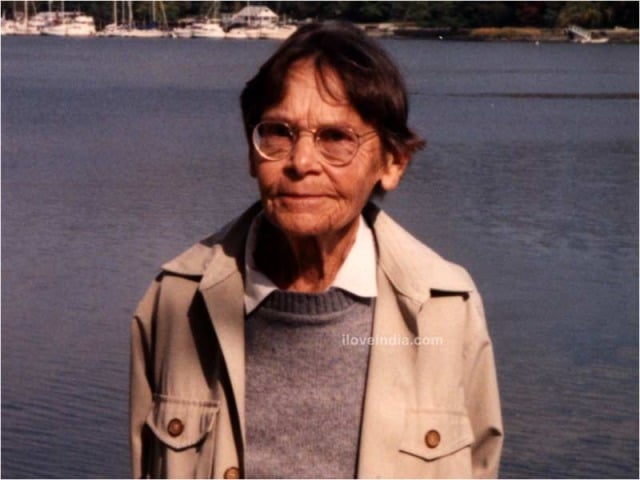 |
| Marie Curie |
Together with her husband, they performed ground breaking and risky procedures in their laboratory. On the heels of the discovery of radiation by Henri Becquerel in 1896, she developed ways to separate radium from radiation leading to many current practices, including chemotherapy. Later in life, she became the Director of the Curie Laboratory in the Radium Institute of the University of Paris. For her work, she was awarded various prizes, including the Nobel Prize for Physics in 1903 and again for chemistry in 1911.
 |
| Ada Byron |
Also known as Lady Lovelace, she was the daughter of world renowned poet, Lord Byron. Although she strived to be an analyst and metaphysician, her father’s gift of imagination and creativity led her to see the then Analytical Engine as something far more profound. After her translation of the engines creator’s work took on a life of its own, she suggested a plan for how the engine could calculate Bernoulli numbers. This plan, developed in 1843, would then be regarded as the first ever computer program.
 |
| Rosalind Franklin |
Born in Great Britain in 1920, Rosalind decided to be a scientist at the age of 15. However, she hit a speed bump when her father refused to pay for higher education, believing women were unfit for it. With some prodding from family members, Rosalind was finally able to go where she was able to assist in making amazing breakthroughs in DNA research. She was able to adjust x-ray equipment to produce a fine beam and extract DNA fibers like never before. Unfortunately, her life was cut short at the age 37 by ovarian cancer. But her name and work still live on the
Rosalind Franklin University of Medicine and Science in Illinois.
 |
| Lisa Meitner |
Born in 1878 in Austria, she was the third of eight children. After obtaining a doctorate from the University of Vienna, she went on to study with noted chemist
Otto Hahn who would later go on to win the Nobel Prize for Chemistry in 1944 for their collaborated work. It led to the discovery of a new element protactinium, the Auger effect, and eventually discovered the process of nuclear fission with her nephew. Being of Jewish descent, her work was interrupted by the Nazi invasion, but she survived to continue her work.
 |
| Hypatia of Alexandria |
Born at approximately 360 A.D. in Alexandria, Egypt, she is considered the first female mathematician. Along with her father, they collaborated together on impressive works such as “Arithmetica,” “Almagest,” and “Elements.” She is also believed to have written “The Astronomical Canon.” Hypatia also did work in
philosophy,
accounting, and astronomy. She is even credited with the charting of celestial bodies, the invention of the hydrometer, and more.
 |
| Dorothy Hodgkin |
Born in Cairo in 1910, this British scientist is noted with discovering protein crystallography, which is a method of x-rays that can determine the arrangement of atoms. She became interested in chemistry and in crystals at about the age of ten and was encouraged by a friend of her parents who gave her chemicals and helped her analyze them. When returning to Oxford in 1934, she would continue the work that earned her a Nobel Prize in Chemistry in 1964. Her work was also vital in the studies of insulin and penicillin.
 |
| Sophie Germain |
She was born in France in 1776 to an era of revolution. Thirteen years later, her country would undergo its own revolution, and due to her confinement at home, she became interested in mathematics. Although her parents objected to a female learning mathematics, Sophie continued to read on the subject and teach herself. Unable to attend institutions of higher education, Sophie found ways to study by obtaining lecture notes, using a pseudonym to write to scientists, and even attending academic functions. Her work ultimately led to the theory of elasticity and noted advances in number theory.
 |
| Barbara McClintock |
Born in 1902, this American was one of the world’s most noted cytogeneticists, a geneticist who studies the structure and function of the cell with particular interest in chromosomes. She attended Cornell University in 1927 where she received a PhD in botany. However, after an undergraduate course in genetics, she found herself fascinated by the subject. Barbara devoted her studies to seeing how chromosomes change during the reproduction process. It was during this work that she discovered that genes could move between and on chromosomes, leading to many other important discoveries. For this, she was awarded the Nobel Prize in Physiology or Medicine in 1983.
 |
| Rachel Carson |
She was a writer, scientist, and ecologist born in Pennsylvania in 1907. After obtaining a MA in Zoology from Hon Hopkins University, she was hired by the U.S. Bureau of Fisheries to write radio scripts during the depression and feature articles on natural history for the “Baltimore Sun.” After becoming concerned by the use of synthetic chemical pesticides after World War II, Carson changed her focus in order to warn the public about the long term effects of misusing pesticides. One of the very first environmentalists, she changed the world by inspiring a host of present and future ones.
**Materials taken from
here. Continue reading to see the remaining six who's still alive.


















1 comments:
....? site sucks
Post a Comment